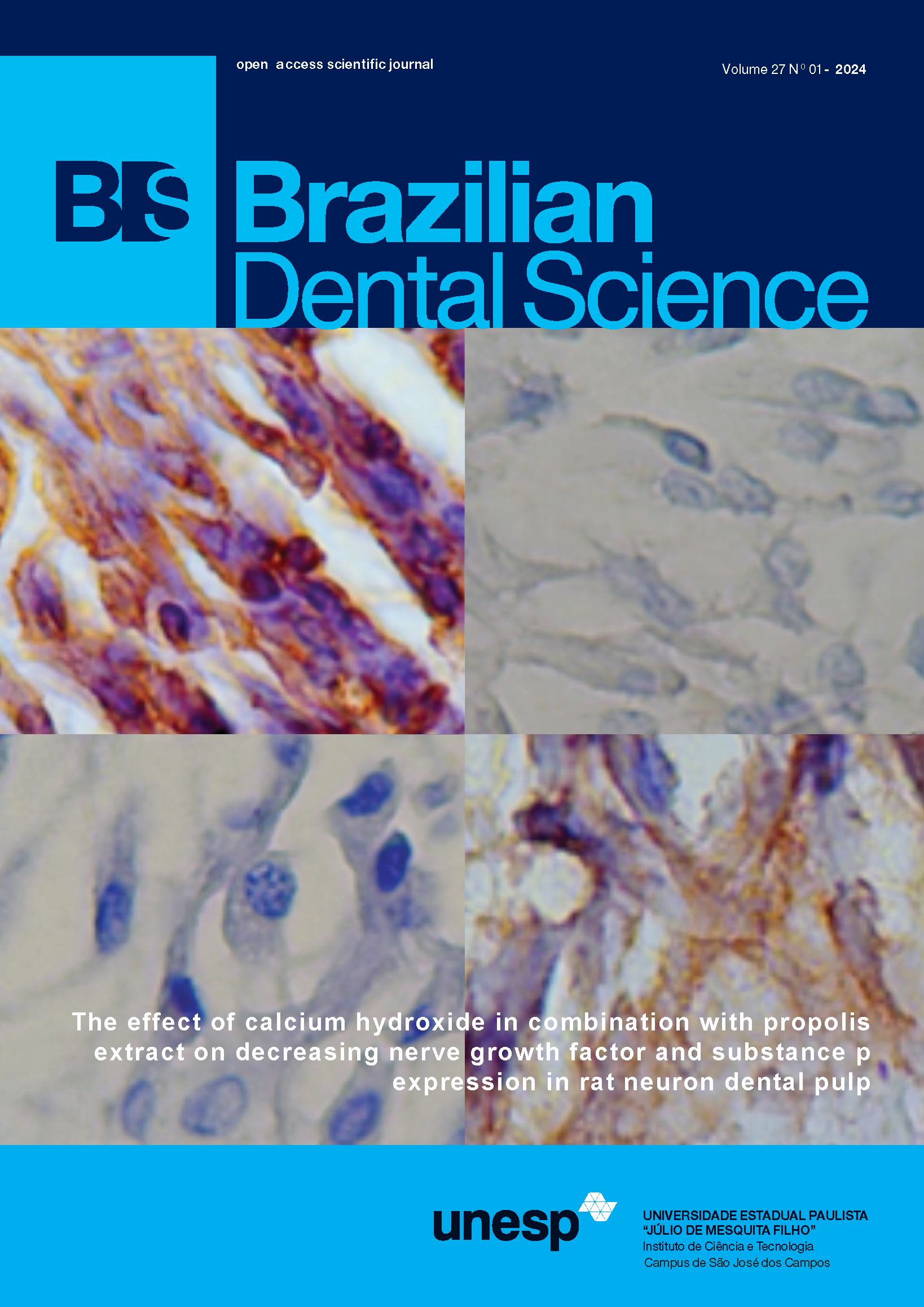Estrogen deficiency influences SEC23A gene expression in the odontogenic region of incisors – a murine model study
DOI:
https://doi.org/10.4322/bds.2024.e3827Abstract
Recent scientific evidence suggests a close relationship between estrogen deficiency and vitamin D- related genes. Estrogen and vitamin D were involved with alterations in odontogenesis and tooth eruption process. Objective: The aim of the present study was to evaluate the influence of estrogen deficiency on the expression of genes related to the activation and degradation of vitamin D in the odontogenic region of incisors in a murine model. Material and Methods: This is an experimental clinical study that used female Wistar Hannover rats. The animals were randomly divided into two groups according to the intervention received: Hypoestrogenism Group – animals submitted to estrogen deficiency by ovariectomy surgery and Control Group – animals submitted to sham surgery. Surgical intervention was performed in the prepubertal period; the animals were followed throughout the pubertal period. After euthanasia, the hemimandibles were removed to evaluate the mRNA expression of the vitamin D-related genes AMDHD1, CYP24A1, NADSYN1 and SEC23A in the odontogenic region of incisors through real time PCR. Student’s t test was used to compare means. Kruskal-Wallis test and Dunn’s posttest were also used. The level of significance was 5%. Results: SEC23A was overexpressed in the estrogen deficiency condition in the odontogenic region (p=0.021). Conclusion: Estrogen deficiency may influence the expression of the SEC23A gene involved in the activation and degradation of vitamin D in the odontogenic region of incisors in a murine model.
KEYWORDS
Estrogen; 25-hydroxyvitamin D3; Gene expression; Odontogenesis; Vitamin D.
Downloads
Published
How to Cite
Issue
Section
License
Brazilian Dental Science uses the Creative Commons (CC-BY 4.0) license, thus preserving the integrity of articles in an open access environment. The journal allows the author to retain publishing rights without restrictions.
=================




























